Marder III Ausf. H
This is a working example of the German self-propelled anti-tank gun called the Jagdpanzer Marder III Ausf. H 7.5 cm PaK 40/3 Tank Destroyer Sd.Kfz. 138. The original vehicle was based on a Czech built LT vs. 38 light tanks that was given the name Panzer 38(t) by the German Army.
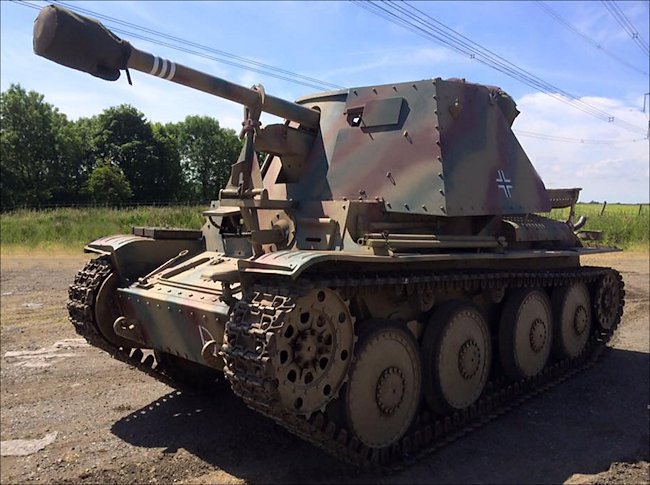
Jagdpanzer Marder III Ausf. H 7.5 cm PaK 40/3 Sd.Kfz 138 Tank Destroyer in Working condition
Location
Unfortunately this Marder III SPG is in a private collection that is not open to the public, but it can be seen at historical military vehicle events like the Yorkshire Wartime Experience in England.
Specifications
The Marder III Ausf. H self propelled gun was based on a Czechoslovakian built Panzer 38(t) tank chassis which was obsolete in 1942. A standard German 7.5 cm PaK 40/3 anti-tank gun was fitted to a Panzer 38(t) Ausf. H chassis. Unlike the pervious Marder III that used the captured Soviet 76.2 mm field gun, the fighting compartment was in the centre of the vehicle and not at the rear. This enabled the gun crew to stay low in the vehicle. The large side armour gave additional protection. The armour thickness ranged from 10 mm to 50 mm. the rear and top of the vehicle had no armour protection. Because the gun was fitted to the top of a tank chassis it had a hull mounted 7.92 mm MG 37(t) machine gun.
The official German Army designation for this SPG was 7.5 cm PaK 40/3 auf Panzerkampfwagen 38(t) Ausf. H, Sd.Kfz. 138. A total of 275 vehicles were built in two series from November 1942 to April 1943. An additional 175 vehicles were converted from Panzer 38(t)'s in 1943. It was powered by a Czechoslovakian Praga Typ TNHPS/II water-cooled, 6-cylinder petrol engine that produced 148 hp. It had a top road speed of 42 km/h (26 mph) and had an operation range of 210 km (130 miles) before refueling.
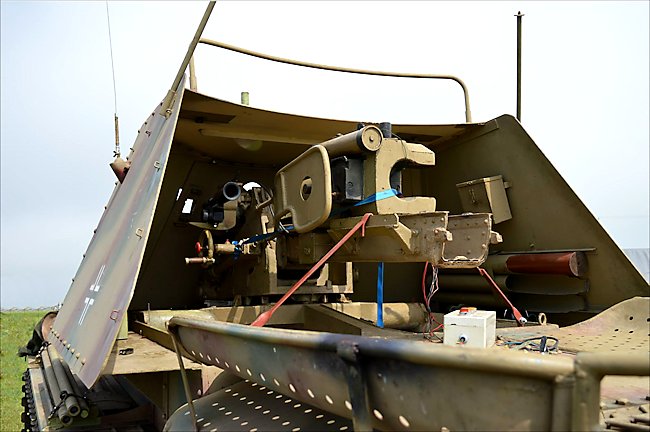
The Marder III Ausf. H was armed with a 7.5 cm PaK 40/3 anti tank gun.
This SPG's story
It did not start life as a Marder III. This is not an original Marder III Ausf. H but the majority of the parts are from the WW2 era. The tank chassis hull is from a Swedish Stridsvagn m/41 Tank. It was a licensed copy of the tank used successfully in WW2 by the Germans during the 1939 invasion of Poland and later during the invasion of Belgium, Holland and France in 1940. The Germans called the tank the Panzer 38(t). They had captured these vehicles from the Czechoslovakian Army when they occupied their country. The Czechs called them LT vs. 38. This tank chassis was built in Sweden. It was obtained by the owner from R&R Services in Kent, England.
The Marder conversion parts were found in a pit in an old German Tank factory. The parts were not in operational service as the holes for the gun mount hadn't been drilled. These parts were new. The vehicle is part of the Allan Swatman private collection based in Hull, East Yorkshire, England. It takes part in battlefield reenactments with the 21st Panzer Division Living History Group (UK). This vehicle has appeared in a number of films made for the big screen and TV. You can see it in Saving Private Ryan and also the epic TV series Band of Brothers.
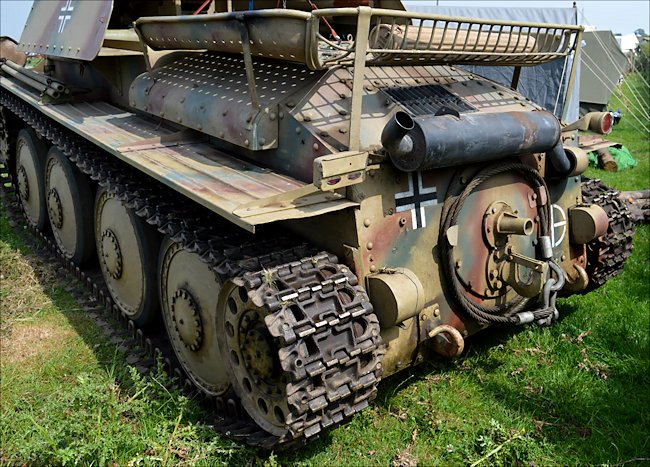
The round cone sticking out of the back of the Marder III Ausf. H chassis was where the engine starting crank was inserted.
Why was the Marder III built?
In 1941 when the German army invaded the Soviet Union in Operation Barbarossa their main battle tank was the Panzer III that was only armed with a 50mm gun. They had a nasty surprise when they encountered the new Soviet T-34 and KV-1 tanks. The armour piercing round fired by the Panzer III could only pierce their front armour at very close range. Most shells just bounced off. The German-made Rheinmetall-Borsig towed 7.5 cm PaK 40 series of anti-tank guns and captured Soviet 76.2mm F-22 Model 1936 divisional field guns could knockout these enemy tanks.
The German 7.5 cm gun was able to penetrate 116mm of armor at 0 degrees with armor-piercing ammunition at the distance of 1,000 meters. Captured Soviet guns were modified by Rheinmetall-Borsig and re-chambered to accept the German 7.5 cm PaK 40 ammunition. They could penetrate 108mm of armor at 0 degrees at a range of 1,000 meters using armor-piercing ammunition.
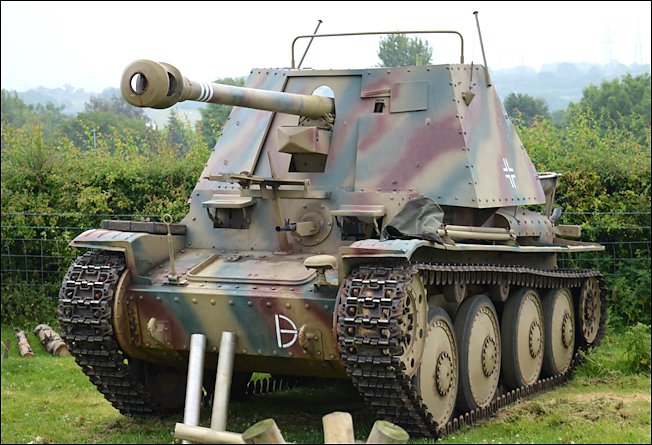
The Marder III Ausf. H gun crew only had armour protection at the front and half of the side.
New German tanks like the Tiger and Panther were being designed to cope with this new threat. They would be expensive and take a long time to build. The German Army had captured a lot of enemy tanks that were now obsolete. A decision was made to use these vehicle as gun carriers; their turrets would be removed and an anti-tank gun would be fitted to the top and an armoured casement built around it to give protection from small arms fire and shell shrapnel for the gun crew.
The entire Marder series of self-propelled guns suffered from a rather high profile, making them a target that was easy to spot by the enemy and therefor vulnerable. All vehicles were open at the top and carried canvas covers for protection from weather during rest and transport. For self defence a Machine gun was also fitted to a bar on top of the fighting compartment in addition to the one in the tank hull.
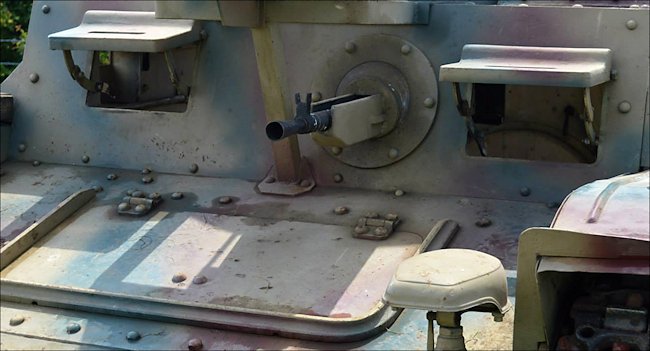
The Marder III Ausf. H was armed with a a hull mounted 7.92 mm MG 37(t) machine gun.
Despite their limitations they were an effective mobile, cheap and easy to produce powerful anti-tank weapon. They were gradually replaced by StuG IIIs fitted with 7.5 cm guns and other jagdpanzers that had a fully enclosed crew compartment and a much lower silhouette.
Thanks to Ian Wilcox for sending me these photos taken at the Yorkshire Wartime Experience Event
WW2 tank books

